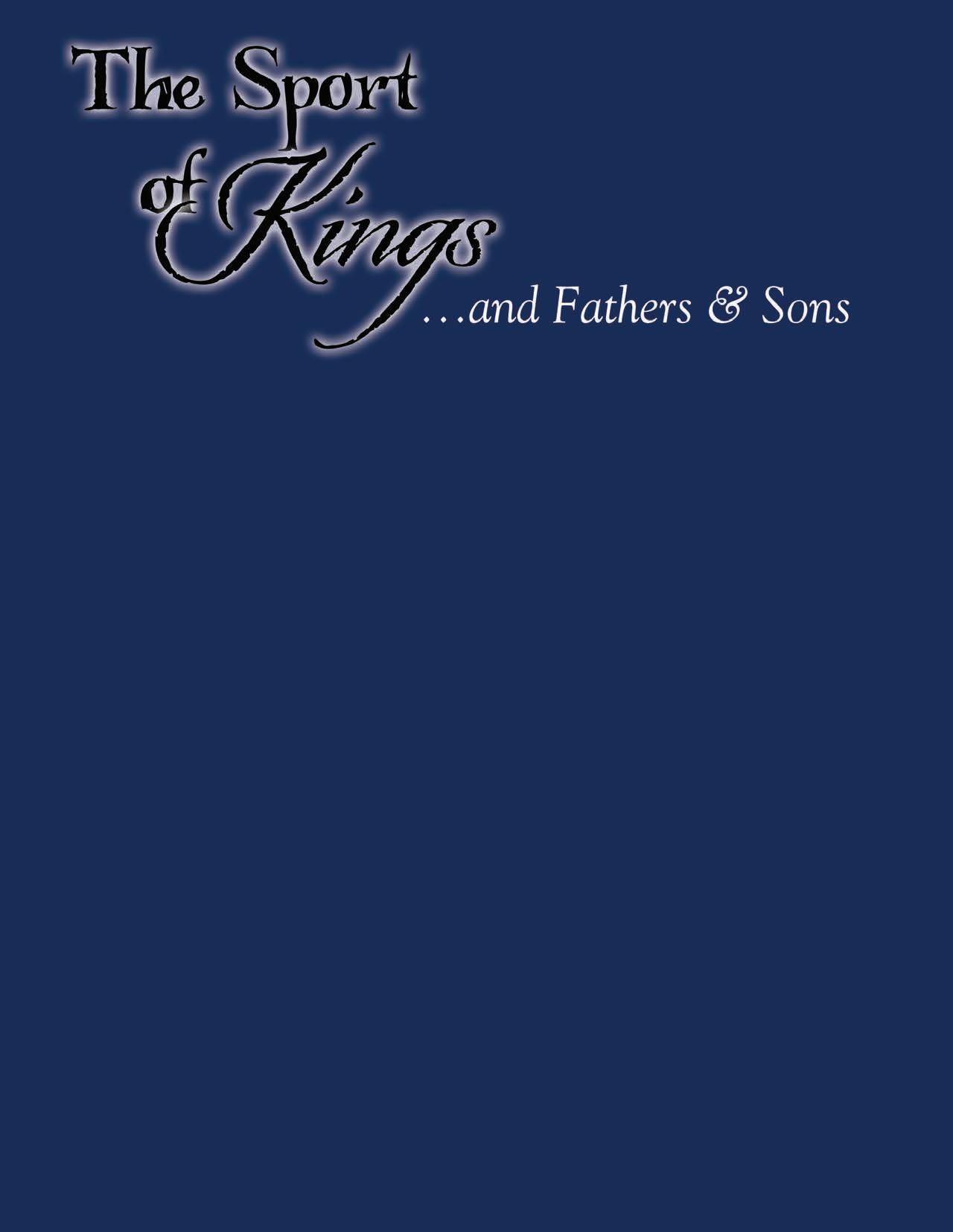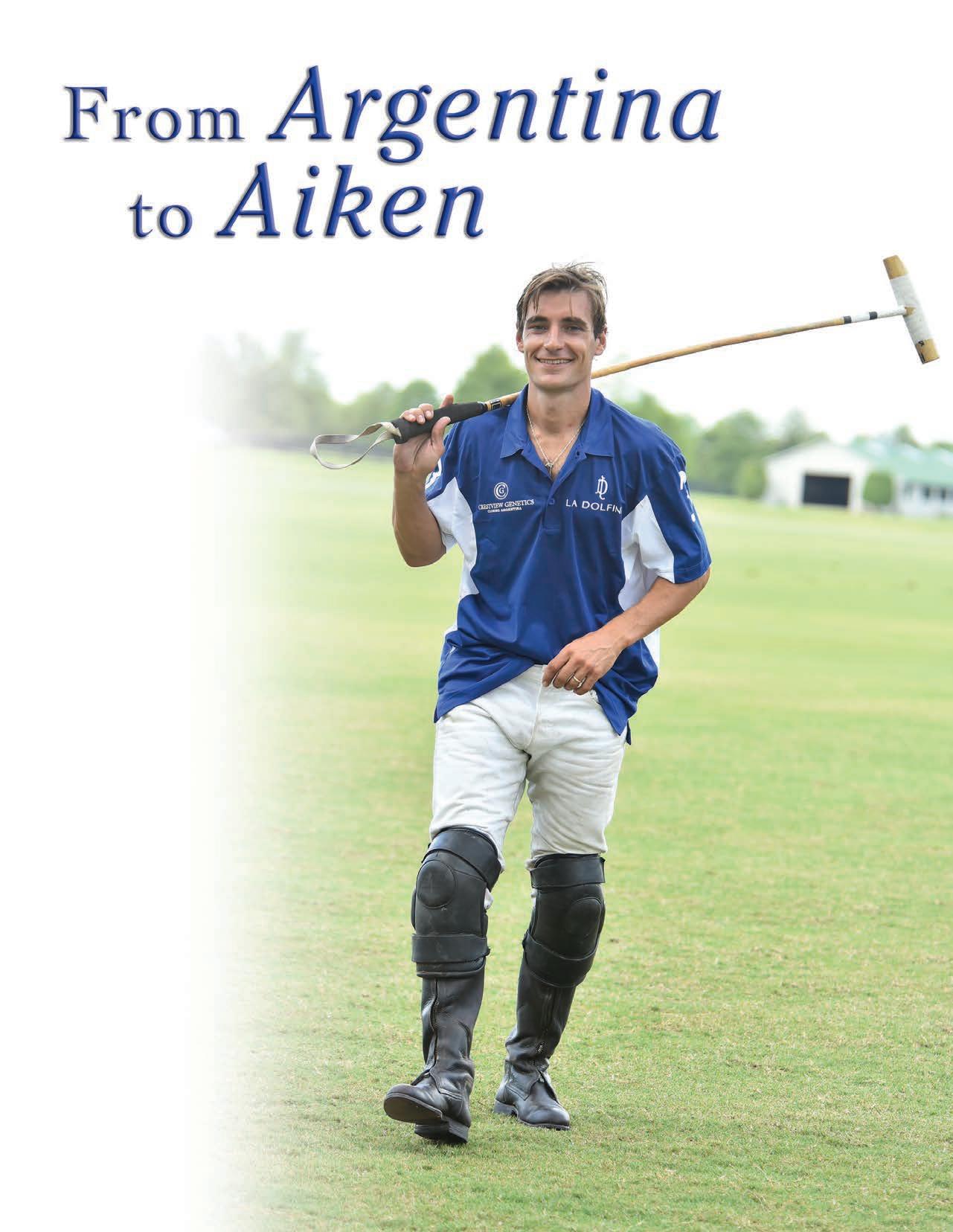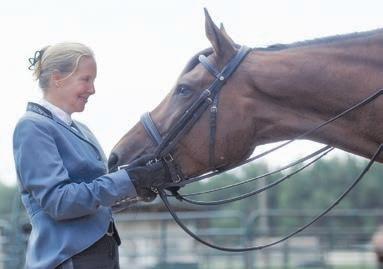A
A-Z
of
C D E F G P O LO
A I D : Any signal given to a horse to prompt it to turn, change gaits, or perform some other maneuver.
A N N O U N C E R S : Sometimes employed by the club to announce games for the crowd, sometimes volunteers, these individuals possess varying amounts of talent, knowledge and wit.
B
A P PE A L : Claim by player for a foul, usually expressed by the
raising of mallet above their head. Overly demonstrative appealing is considered very bad form.
A RG I E : Player from Argentina, a country noted for producing top polo players and ponies. B AC K :
The number 4 in a polo team is usually referred to as the “Back” rather than by a number lie the other members of the team.
B AC K S H OT: Hitting the ball in a direction opposite to that which the player is travelling.
B A L L : (1) The entire point of a polo match is to wallop the ball up the field and through the goal posts. Polo balls are about three and a half inches in diameter, weigh four and a half ounces and are made of hard wood or plastic. (2) A Black Tie or Fancy Dress event, usually consisting of dinner and dancing, sometimes benefitting a charity. B I G S T I C K : The highest rated player on a team, a term usually reserved for players of considerable talent and showmanship. B I T: The mouthpiece to which the reins are attached.
B OA R D S : Made of wood or plastic, up to eleven inches in
height, they run continuously along the sidelines of the field to help keep the ball in play and the game flowing. Players may ride outside the boards as long as the ball remains within them.
B U M P : A defensive maneuver on the field, which is one of the few contact moves allowed. A player attempts to ruin an opponent’s run with the ball by bumping his horse against the other player’s. This action is regulated by the angle at which the aggressor attempts it. It may never be executed at more than 45 degrees., and the faster the horses are running, the smaller the angle allowed.
Article reprinted courtesy of Calgary Polo Club.
C H U K K E R / C H U K K A : The origins of this term, meaning the “basic period of play,” are obscure, although it is thought to have come from India. There are between 4 and 6 chukkas of play (dependant on the level of polo being played) - each lasting 7 minutes. With 30 seconds left in play a bell is sounded to warn the players.
D I VOT S : Chunks of grass and earth that the horses have torn out of the field. The holes can cause bad bounces of the ball and other problems during play, so traditionally at half time the fans venture out to stomp divots, thus repairing the playing surface. E N D S : The back lines of a polo field, teams witch ends (switch the goals they defend) each time a goal is scored to equalize weather and turf conditions.
F I E L D : Regulation polo fields are 300 yards by 160 yard, a space big enough to fit nine football fields into. The goalposts are set eight yards apart.
F O U L : An infraction of the rules set forth by the United States Polo Association (USPA), Fouls govern safe riding and the concept of the line of the ball. G A I T: The manner in which a horse goes, based on the sequence and rhythm of its foot movements, walk, trot, canter, or gallop.
G OA L : A goal is scored every time the ball passes between the goal posts, whether hit by an offensive player, defensive player, or pony. G R E E N H O R S E : A term used to refer to a young or
inexperienced horse.
G R E E N H O R S E P O LO : Special non-competitive games structured for the development of skills and confidence in young ponies. G RO O M : (a) Polo grooms are responsible for the care of a player’s ponies and their equipment. They feed, muck out, ‘tack up’, check horses for signs of injury, school and practice horses and liaise with vets and farriers. Grooms usually travel with a particular player and set of horses. The groom will therefore have particular knowledge of the needs of both the ponies and the player. Good grooms are highly respected and can contribute hugely to the success of a player. (b) The act of transferring the dirt from a horse to the individual grooming it.
N e w B r i d g e Po l o | 2 0 1 5 | 1 0 9
















